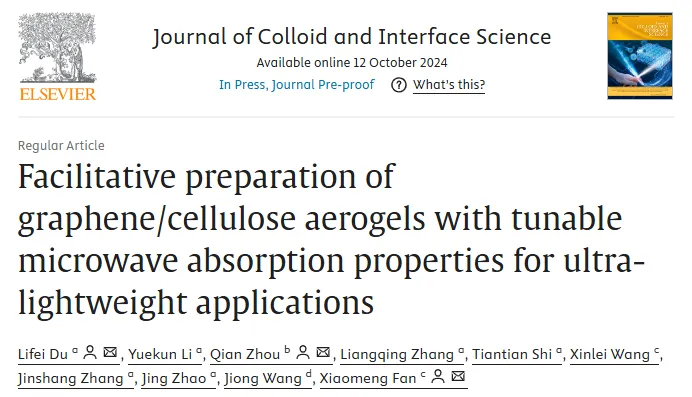Xi’an University of Science and Technology: Graphene/Cellulose Aerogels for Ultra-Lightweight Microwave Absorption Applications
1. Research Summary
Graphene aerogels, a new type of carbon-based composite material, exhibit great potential in wave-absorbing applications due to their high conductivity, tunable structure, and corrosion resistance. By designing the preparation process to effectively adjust the microstructure of graphene aerogel composites, the dielectric properties can be precisely controlled, which is crucial for enhancing their wave absorption performance. In a paper titled “Facilitative preparation of graphene/cellulose aerogels with tunable microwave absorption properties for ultra-lightweight applications”, Associate Professor Du Lifeng and his research team at Xi’an University of Science and Technology published their findings in Journal of Colloid and Interface Science. They successfully prepared two types of graphene/cellulose aerogel composites using graphene and short cellulose fibers as raw materials, employing a dissolution-regeneration strategy and freeze-drying method to create 3D porous graphene/cellulose aerogels.
The study compared the differences in microstructure, dielectric properties, and electromagnetic wave absorption performance. The results show that the graphene/cellulose aerogels, where graphene nanosheets are incorporated into the cellulose matrix, exhibit superior absorption performance. A composite with 32 wt% graphene effectively absorbs electromagnetic waves across the entire X-band (8-12.4 GHz) with a reflection loss lower than -10 dB within a relatively large thickness range (3.9–4.7 mm). The aerogels have a density of less than 0.02 g/cm³, highlighting their immense potential as excellent lightweight microwave absorbers. This research summarizes the multi-scale electromagnetic wave absorption mechanisms and provides important insights for designing ultra-lightweight materials with ideal broadband absorption properties.
2. Visual Guide
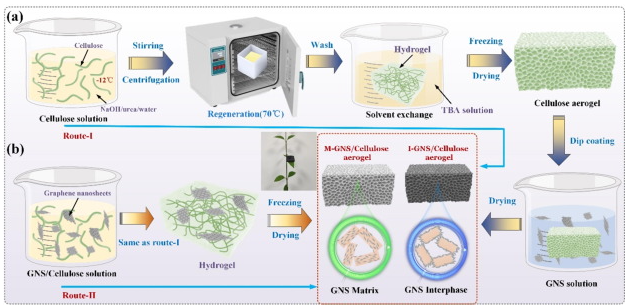
- Figure 1: Manufacturing process of two types of GNS/cellulose aerogels.
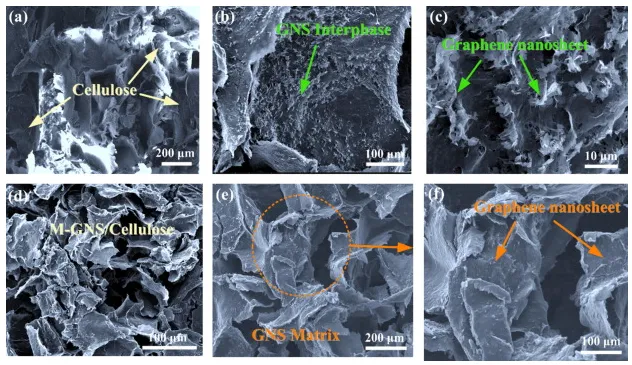
- Figure 2: Morphology of the prepared aerogels.
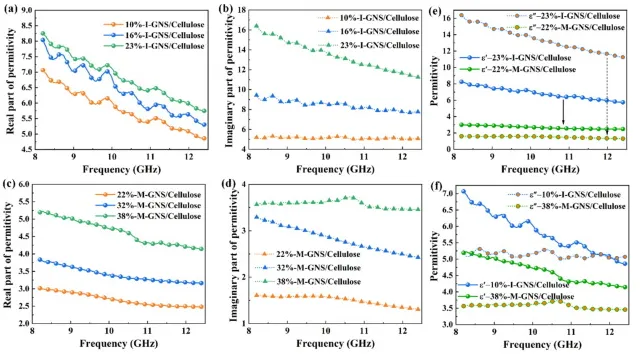
- Figure 3: Complex dielectric constants of I-GNS/CA and M-GNS/CA composites with varying graphene nanosheet content.
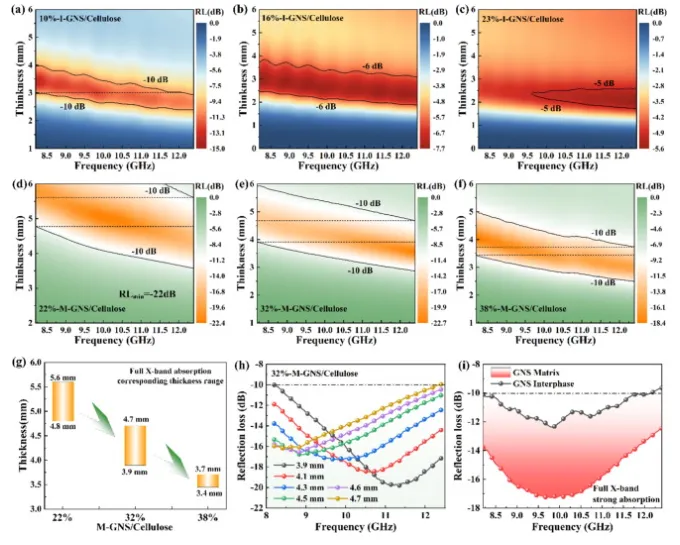
- Figure 4: Thickness-density reflection loss (RL) of GNS/CA composites in the 8–12.4 GHz frequency range.

- Figure 5: Schematic of the electromagnetic wave absorption mechanism of the proposed GNS/CA composites.
3. Conclusion
This study prepared two typical graphene/cellulose aerogel composites and investigated the impact of graphene incorporation on the electromagnetic wave absorption properties of cellulose aerogels. For graphene/cellulose composites where graphene nanosheets coat the surface of the channels in 3D porous cellulose aerogels, the graphene nanosheets easily form a complete conductive network, leading to poor impedance matching and a relatively large complex dielectric constant. Interestingly, when the graphene nanosheets are mixed with cellulose before the preparation of the 3D aerogel structure, the graphene/cellulose aerogels with uniformly distributed graphene can achieve effective electromagnetic wave absorption across the entire X-band within a relatively large thickness range. The density of the aerogel is under 0.02 g/cm³. The dielectric properties and corresponding electromagnetic absorption performance can be customized by adjusting the graphene content and aerogel thickness. The perfect absorption of the prepared graphene/cellulose aerogels is attributed to the synergistic effects of various electromagnetic wave loss modes induced by the multi-scale structure, including multiple scattering, interference cancellation, conduction loss, dipole polarization, and interface polarization loss. All the prepared aerogels exhibit relatively low density, making them highly promising for designing ultra-lightweight absorption materials with perfect broadband absorption capabilities.
Reference: DOI
